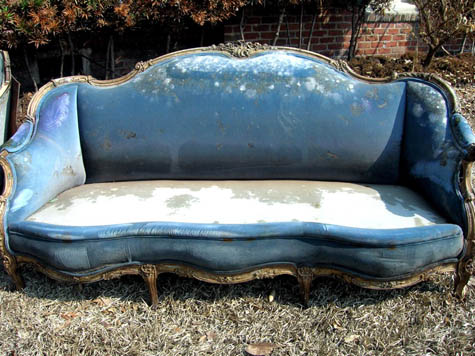 [Image: A moldy sofa, otherwise unrelated to this post, photographed by Flickr user melinnis – who also made this awesome image].
[Image: A moldy sofa, otherwise unrelated to this post, photographed by Flickr user melinnis – who also made this awesome image].Russian scientists have begun testing blood stains on the sofa where novelist Alexander Pushkin is rumored to have died, in order to determine if those stains might have come from Pushkin himself.
At least two things interest me here:
1) It's the forensic sciences applied to antique furniture in order to find the otherwise undetectable remains of a dead Russian novelist. One might even say residue here, not remains at all; it is the barest of traces. Suddenly, though, it's as if those old stuffed sofas, fading carpets, and tables of hand-worn wood in obsolete interiors around the world have been transformed into a kind of archaeological site, in which the chemical traces of literary history might yet be discovered. The sofa is Pushkin's Calvary, if you will – a chemical reliquary. Furniture becomes a kind of hematological Stargate into literature's mortal past. Who else might they find in there? You go around the world performing genetic tests on antique furniture to see which novelists ever used it – traces of Sebald, Hemingway, Tolstoy.
2) Two words: Pushkin Park. We clone Pushkin and start a theme park. Like a thousand Mini-Me's well-versed in storycraft, Pushkin – one man distributed through a thousand bodies – wanders the artificial landscape, and like some strange Greek myth wed with Antiques Roadshow, he tells the crowds, "I sprung forth, fully formed, from a sofa..." And there begins a tale for stunned tourists.
(Via the Guardian).
No comments:
Post a Comment